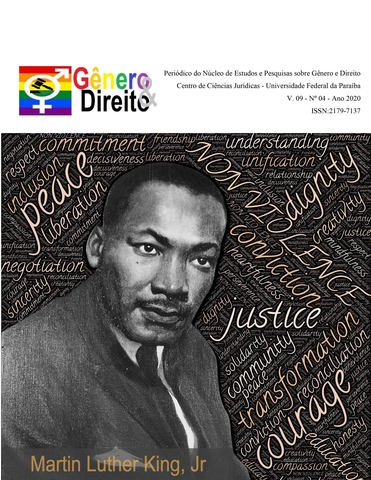RIGHT TO FREEDOM OF EXPRESSION IN CONDITIONS OF INFORMATION TECHNOLOGIES DEVELOPMENT
Palavras-chave:
human rights, the Internet, digital rights, criminal investigation, proportionalityResumo
The relevance of the study is stipulated by the need to rethink the essence and content of the right to Freedom of expression, which by virtue of the development of information technology has acquired new values in the information society. The development of the Internet has fostered the emergence of new human rights related to the right to Freedom of expression. The purpose of the article is to summarize existing approaches to understanding the Right to Freedom of expression, to identify correlation with other rights, taking into account the impact of information technology development on human rights, and to formulate provisions that may be basis for improving the legislation and activities of public authorities as to certain rights provision. The study is based on a dialectical approach, which necessitates the clarification of certain aspects of the formation and development of the Right to Freedom of expression and its interrelation with other human rights. As a result of the study it is found that the Right to Freedom of expression was significantly influenced by the development of the Internet. The Internet has become a factor in the formation of a new generation of human rights, which are expedient to call digital rights. These rights include the right to be forgotten, the right to access to the Internet. The main provisions of the article can be used for further study of the right to Freedom of expression and digital rights, and can also be useful for non-governmental human rights organizations and public authorities to strengthen human rights guarantees.
Downloads
Referências
Astuti P. (2016). Freedom of expression through social media and the political participation of young voters: a case study of elections in Jakarta, Indonesia. Socrates, 4(4), 74-88.
Case of Ahmet Yildirim v. Turkey (Application no. 3111/10) (2012). European Court of Human Rights. http://hudoc.echr.coe.int/eng?i=001-115705.
Case of Autronic AG v. Switzerland (Application no. 12726/87) (1990). European Court of Human Rights. http://hudoc.echr.coe.int/eng?i=001-57630.
Case of Buscarini and Others v. San Marino (Application no. 24645/94) (1999). European Court of Human Rights. http://hudoc.echr.coe.int/eng?i=001-58915.
Case of Gawęda v. Poland (Application no. 26229/95) (2002). European Court of Human Rights. http://hudoc.echr.coe.int/eng?i=001-60325.
Case of Groppera Radio AG and Others v. Switzerland (Application no. 10890/84). (1990). European Court of Human Rights. http://hudoc.echr.coe.int/eng?i=001-57623.
Case of Guerin v. France (Application no. 51/1997/835/1041) (1998). European Court of Human Rights. http://hudoc.echr.coe.int/eng?i=001-58204.
Case of Kokkinakis v. Greece (Application no. 14307/88) (1993). European Court of Human Rights. http://hudoc.echr.coe.int/eng?i=001-57827.
Case of Leyla Şahin v. Turkey (Application no. 44774/98) (2005). European Court of Human Rights. http://hudoc.echr.coe.int/eng?i=001-70956.
Case of Lyashko v. Ukraine (Application no. 21040/02) (2006). European Court of Human Rights. http://hudoc.echr.coe.int/eng?i=001-76714.
Case of Mahmudov and Agazade v. Azerbaijan (Application no. 35877/04). (2008). European Court of Human Rights. http://hudoc.echr.coe.int/eng?i=001-90356.
Case of Observer and Guardian v. the United Kingdom (Application no. 13585/88) (1991). European Court of Human Rights. http://hudoc.echr.coe.int/eng?i=001-57705.
Case of Perrin v. the United Kingdom (Application no. 5446 / 03) (2005). European Court of Human Rights. http://echr.ketse.com/doc/5446.03-en-20051018/view/.
Case of Ruusunen v. Finland (Application no. 73579/10) (2014). European Court of Human Rights. http://hudoc.echr.coe.int/eng?i=001-139989.
Case of the Sunday Times v. the United Kingdom (Application no. 6538/74). (1979). European Court of Human Rights. http://hudoc.echr.coe.int/eng?i=001-57584.
Case of Von Hannover v. Germany (Application no. 59320/00) (2004). European Court of Human Rights. http://hudoc.echr.coe.int/eng?i=001-61853.
Coccoli J. (2017). The challenges of new technologies in the implementation of human rights: an analysis of some critical issues in the digital era. Peace Human Rights Governance, 1(2), 223-250. DOI: 10.14658/pupj-phrg-2017-2-4.
Conners L. (1997). Freedom to connect. Wired Magazine, 5, 106-107.
Enarsson T, Lindgren S. (2019). Free speech or hate speech? A legal analysis of the discourse about Roma on Twitter. Information & Communications Technology Law, 28(1), 1-18. DOI: 10.1080/13600834.2018.1494415.
Howard PN, Kollanyi B, Bradshaw S, Neudert L-M. (2017). Social media, news and political information during the US Election: Was Polarizing Content Concentrated in Swing States? Oxford: Project on Computational, 243.
Ivanii O, Kuchuk A, Orlova O. (2020). Biotechnology as factor for the fourth generation of human rights formation. Journal of History Culture and Art Research, 9(1), 115-121. DOI: 10.7596/taksad.v9i1.2540.
Karklins J. (2011). Preface. In WH Dutton, A Dopatka, G Law, N Victoria (Eds.), Freedom of connection, freedom of expression: the changing legal and regulatory ecology shaping the Internet (рр. 3-4). Paris: UNESCO.
Kuchuk AM, Serdiuk LM, Zavhorodnia YS. (2019). Modern law education in the context of natural understanding of law. The Asian International Journal of Life Sciences, 21(2), 359-370.
Momen MN. (2019). Myth and reality of freedom of expression on the Internet. International Journal of Public Administration, 43(3), 277-281. DOI: 10.1080/01900692.2019.1628055.
Okinawa Charter on Global Information Societ (2000). Kyushu-Okinawa Summit. https://www.mofa.go.jp/policy/economy/summit/2000/documents/charter.html.
Penney JW. (2011). Internet access rights: a brief history and intellectual origins. William Mitchell Law Review, 38(1), 10-42.
Restrepo R. (2013). Democratic freedom of expression. Open Journal of Philosophy, 3(3), 380-390. DOI: 10.4236/ojpp.2013.33058.
Richard R, John RR. (2019). Freedom of expression in the digital age: a historian’s perspective. Church, Communication and Culture, 4(1), 25-38. DOI: 10.1080/23753234.2019.1565918.
Shahbaz A, Funk A. (2019). The crisis of social media. What was once a liberating technology has become a conduit for surveillance and electoral manipulation. Freedom on the Net 2019. The Crisis of Social Media. https://freedomhouse.org/report/freedom-net/2019/crisis-social-media.
Tomalty J. (2017). Is there a human right to internet access? Philosophy Now, 118, 6-8.
Werro F. (2009). The right to inform v. the right to be forgotten: a transatlantic clash. In AC Ciacchi, C Godt, P Rott, LJ Smith (Eds.), Haftungsrecht im dritten Millennium (рр. 285-300). Baden-Baden: Liber Amicorum Gert Brüggemeier.
Zakharchenko A, Maksimtsova Y, Iurchenko V, Shevchenko V, Fedushko S. (2019). Under the conditions of non-agenda ownership: social media users in the 2019 Ukrainian presidential elections campaign. In S Fedushko, T Edoh (Eds.), The 1st International Workshop on Control, Optimisation and Analytical Processing of Social Networks (COAPSN-2019) (рр. 199-219). Lviv: CEUR-WS.org

